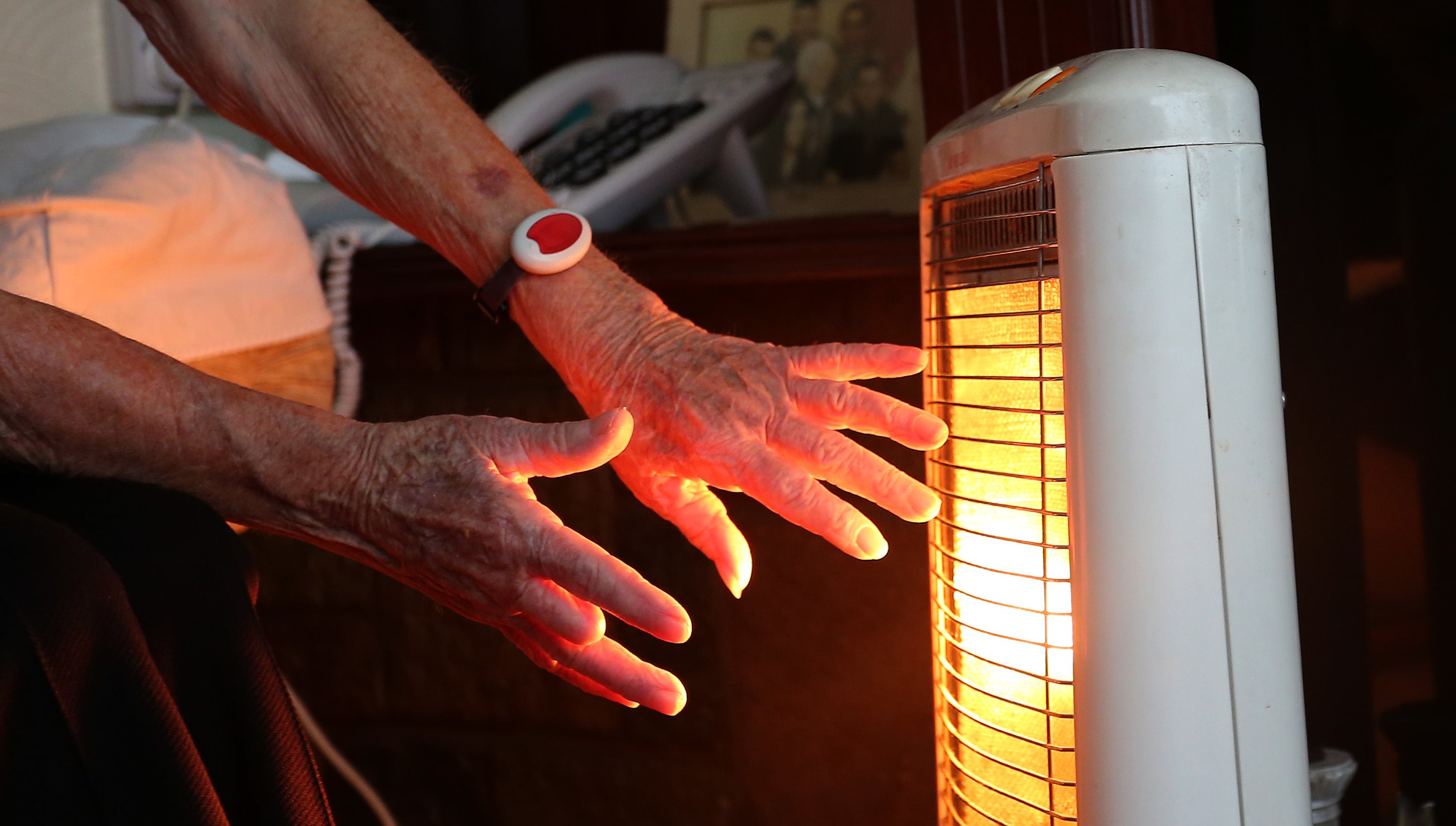What are the dangers of cold homes?
An estimated 55% of UK households will be in fuel poverty this winter.

Your support helps us to tell the story
From reproductive rights to climate change to Big Tech, The Independent is on the ground when the story is developing. Whether it's investigating the financials of Elon Musk's pro-Trump PAC or producing our latest documentary, 'The A Word', which shines a light on the American women fighting for reproductive rights, we know how important it is to parse out the facts from the messaging.
At such a critical moment in US history, we need reporters on the ground. Your donation allows us to keep sending journalists to speak to both sides of the story.
The Independent is trusted by Americans across the entire political spectrum. And unlike many other quality news outlets, we choose not to lock Americans out of our reporting and analysis with paywalls. We believe quality journalism should be available to everyone, paid for by those who can afford it.
Your support makes all the difference.Health experts have predicted a “significant humanitarian crisis” as more than half of UK households are predicted to be in fuel poverty by January.
But what are the health implications of having a cold home?
Here are your questions answered.
– What are the consequences of having a cold home?
Cold temperatures have been found to impair the functioning of the lungs and may trigger asthma and chronic obstructive pulmonary disease.
And as the temperature falls, GPs will also be expecting to treat more and more patients for respiratory tract infections.
People who are tracking electricity and gas meters are also usually less likely to crack open a window for some fresh air – not ventilating a home can cause poor indoor air quality from particulate matter, damp and mould.
Meanwhile, research suggests that deaths from heart disease in England are 23% higher in winter months compared to warmer periods.
Studies have also found that cold affects circulatory health when indoor temperatures fall, which can result in raised blood pressure and increases in blood thickness – both of which lead to heightened risk of heart attacks and strokes.
People in colder homes might also lose some of their strength and dexterity and they may suffer exacerbated symptoms of arthritis – both of which can increase the risk of falls an unintentional injury.
There are more health problems linked to fuel poverty including the impact that stress over paying the bills can have on the body.
Cold homes have also been linked to the exacerbation of mental health problems and dementia.
And let’s not forget hypothermia – a dangerous drop in body temperature which is a medical emergency.
– Will people die?
Colder homes are linked to an increased risk of death – researchers said that last year an estimated 6,000 people died as a direct result of cold homes, with more dying in Britain than in colder countries such as Finland.
In England, there were an estimated 63,000 excess winter deaths in 2020/21. Estimates suggest that some 10% of excess winter deaths are directly attributable to fuel poverty.
– Who is most at risk?
Babies, children, older people and those with pre-existing health problems are at greatest risk of health problems as a result of living in cold homes.
Other people can be affected too, including people with a disability, people with a mental health condition, pregnant women, and those on a low income.
– Are children more resilient?
Cold homes are linked to poor respiratory and mental health among children as well as having impacts on their education.
The new report suggests that without action, there could be life-long impacts on many children.
Children living in cold homes are more prone to asthma and asthma attacks – which can potentially be fatal. They are also more likely to suffer infections such as bronchiolitis, which can lead to them needing hospital care.
The authors of the latest report also highlighted how living in cold homes is associated with multiple mental health risks for young people.
Children in colder home are also more likely to report being unhappy in their family.
Meanwhile experts have said that children living in a cold house are less likely to be able to do their homework, leading to them falling behind at school.
– So what temperature should my home be set to?
The NHS website offers these tips in keeping warm:
– If you’re not very mobile, are 65 or over, or have a health condition, such as heart or lung disease, heat your home to at least 18C.
– Keep your bedroom at 18C all night if you can – and keep bedroom window closed.
– If you’re under 65, healthy and active, you can safely have your home cooler than 18C, as long as you’re comfortable.
– Use a hot water bottle or electric blanket to keep warm in bed – but do not use both at the same time.
– Have at least one hot meal a day – eating regularly helps keep you warm.
– Have hot drinks regularly.
– To reduce the risk of sudden infant death syndrome (SIDS), babies should sleep in rooms heated to between 16C and 20C.
– Draw curtains at dusk and keep doors closed to block out draughts.
– Get your heating system checked regularly by a qualified professional.
– Are there other considerations?
Let’s not forget the impact on the NHS, experts have suggested that illnesses linked to cold, damp and dangerous homes cost the NHS more than £2.5 billion in 2019.